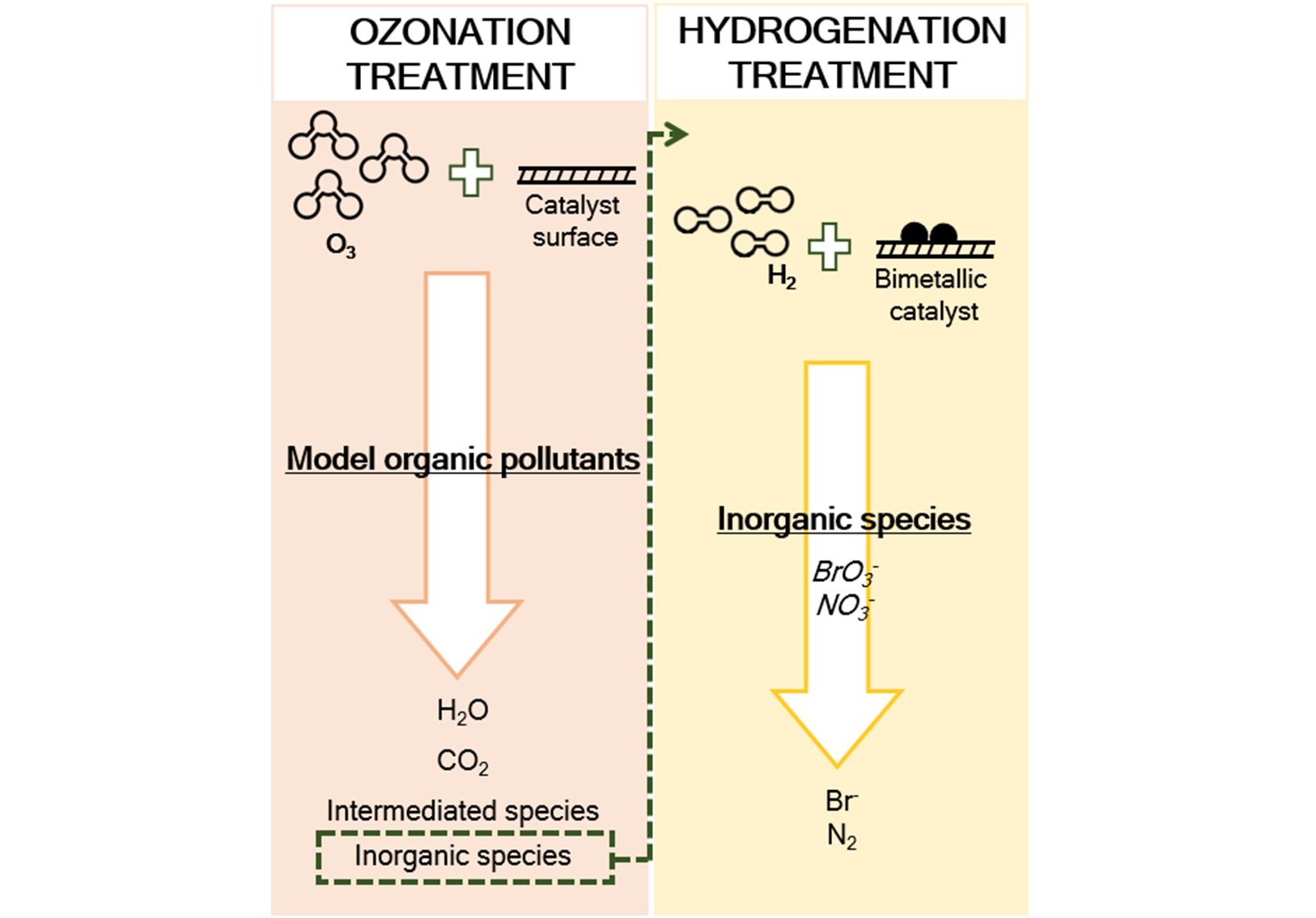
The invention consists of a catalytic setup focused on the integration of oxidation and reduction processes to simultaneously remove organic and inorganic contaminants in a drinking water treatment plant. A single-unit setup, consisting on two column reactors, allow the mineralization of organic pollutants over a catalytic ozonation treatment, followed by the conversion of inorganic subproducts over a catalytic hydrogenation system.
The presence of organic and inorganic micropollutants in water sources has emerged as a pressing environmental concern, posing significant challenges to conventional water treatment processes.
The proposed invention integrates two state-of-the-art approaches to target the complete degradation of these pollutants in an efficient and safe manner for water consumption. The combined processes (catalytic ozonation and reduction) are able to remove emerging organic and inorganic (micro)pollutants more efficiently, promoting not only the degradation and ultimately mineralization of organic pollutants, but also the transformation of resulting inorganic subproducts into non-harmful substances, which established methods fail at. The single-unit catalytic system offers multiple advantages over the typically used fixed-bed packed reactors.
Single-unit system that can be (retro)fitted to existing or new water treatment plants as a tertiary treatment.






